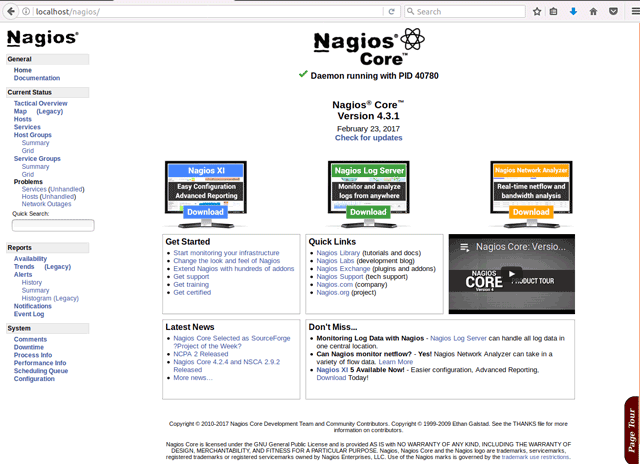Getting Started
-
8. Configuring Nagios
After make the Post-Installation Configuration.
sudo cp -R contrib/eventhandlers/ /usr/local/nagios/libexec/
sudo chown -R nagios:nagcmd /usr/local/nagios/libexec/eventhandlers
Again to Check Nagios Installation.
sudo /usr/local/nagios/bin/nagios -v /usr/local/nagios/etc/nagios.cfg
And to Enable the Web Interface on Apache.
sudo /usr/bin/install -c -m 644 sample-config/httpd.conf /etc/apache2/sites-enabled/nagios.conf
sudo a2enmod cgi
sudo service apache2 restart
-
9. Running Nagios
Finally, to Start up Nagios
Simply play:sudo /etc/init.d/nagios start
And so to Stop it:
sudo /etc/init.d/nagios stop
-
10. Accessing Nagios Web Interface
Again to Create a nagiosadmin Web User with Pass
Issue:sudo htpasswd -c /usr/local/nagios/etc/htpasswd.users nagiosadmin
Take Note of the Password!
Now to Access the Nagios Web Interface.
http://localhost/nagios
User: ‘nagiosadmin’
Pass: That you Setup Before -
11. Installing Nagios Plugins
Download and Install Nagios Plugins

Contents